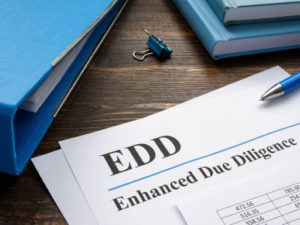Did you know that 82% of small businesses fail due to poor cash flow management?
Cash flow is the lifeblood of any business. They rely on a mix of equity and debt to finance their operations and growth. One crucial aspect that impacts it is the after tax cost of debt.
In this article, we will delve deeper into what after tax cost of debt is. We will also look at how it affects your business finances. Keep reading to understand how you can manage it better and improve your cash flow.
What is After Tax Cost of Debt (ATCD)?
This is the total amount a company pays for its debt after accounting for the tax deductions. It includes interest payments, fees, and other costs associated with borrowing money.
Essentially, it is the effective interest rate a company pays on its debt. It is important to calculate this amount as it gives a more accurate picture of the actual cost of borrowing.
How it Affects Business Finances
ATCD affects business finances in several ways. Here are some of the ways it can impact your business:
Profitability
Business profitability is directly tied to overhead costs, and the ATCD is a component. Lower ATCD translates to higher post-tax profits. Higher ATCD means fewer earnings are retained in the business. This can impact the growth and sustainability of your business.
Moreover, a higher ATCD can also lead to lower stock prices. This can reduce investor confidence. This can have a ripple effect on your business’s financial health.
Cash Flow
ATCD also affects cash flow. It is a recurring expense that businesses must account for in their budgeting. If the ATCD is too high, it can put a strain on your cash flow. This can make it difficult to meet financial obligations.
A lower ATCD can free up more cash flow for reinvestment or dividends to shareholders. This can help your business grow and improve its financial stability.
Credit Rating
ATCD can also impact your credit rating. Lenders look at a company’s ATCD when deciding on loan terms and interest rates.
A higher ATCD may signal a higher risk of default. This can result in higher interest rates or even denial of credit.
On the other hand, a lower ATCD may indicate a company’s ability to manage and repay debt effectively. This can result in more favorable loan terms and interest rates.
Investment Decisions
ATCD plays a crucial role in crafting a company’s investment strategy. Managers must weigh the benefits of investing in new projects against the cost of financing them with debt.
When ATCD is low, it can encourage companies to take on new debt for growth opportunities. Conversely, high ATCD might deter businesses from borrowing. This can potentially stifle expansion and innovation.
Strategic Planning
Long-term strategic planning must account for ATCD. It influences the debt structure and financing approach of a business.
Companies with a comprehensive understanding of ATCD can optimize their capital structure. They can do this by finding the right balance between debt and equity financing. This maximizes shareholder value and business agility in the marketplace.
Tax Planning
Effective tax planning hinges on understanding ATCD. It directly affects a company’s taxable income.
Financial officers can leverage ATCD to strategize on tax liabilities. This ensures that the costs of debt are timed and structured to yield the best possible tax advantages. This process aids in reducing overall expenses and improving the net profit margins.
You might also want to check out these common tax problems to help you. This is especially crucial for new businesses with limited resources.
Factors Affecting ATCD
The ATCD is influenced by three primary factors: tax rate, interest rate, and business risk. Each plays a crucial role in balancing the scales of financial health.
Tax Rate
Tax rates vary depending on the jurisdiction and entity type. Interest payments are tax-deductible, reducing the ATCD. Companies operating in regions with lower tax rates can expect to have a lower ATCD compared to those operating in higher-tax jurisdictions.
Interest Rate
The interest rate is another significant factor affecting ATCD. Higher interest rates translate to higher ATCD. Companies with lower credit ratings or riskier ventures might face higher interest rates.
Business Risk
Companies with a proven track record and stable revenue streams have lower risk levels. This can result in lower interest rates and a lower ATCD.
On the other hand, businesses operating in volatile industries or facing financial troubles might have a higher risk level. This can lead to higher interest rates and a higher ATCD.
Strategies to Optimize ATCD
Given the importance of ATCD, businesses can adopt several strategies to optimize it. This will help bolster their financial health. Here are some tips to consider:
Maintain a Strong Credit Profile
Lenders reward lower-risk borrowers with more favorable interest rates. Keeping your business credit profile in top shape can help negotiate better terms on debt.
Seek Out Tax-Efficient Financing Options
Certain lending structures can offer more tax-deductible interest. For instance, loans with tax-deductible interest can help lower your ATCD. Speak to a financial advisor to explore these options.
Refinance at Favorable Times
Keeping an eye on the interest rate environment and refinance when rates are low. This can lead to substantial cost savings over time. Remember, lower ATCD means more cash flow available for reinvestment.
Diversify Sources of Financing
Businesses can also diversify their sources of financing. This spreads the risk across different lenders and instruments. It also provides a broader range of loan terms and interest rates to choose from.
Use Debt Responsibly
Borrowing too much or for the wrong purposes can lead to higher business risk and an elevated ATCD. Analyze borrowing needs carefully to avoid overleveraging the business. Make sure to use debt for productive investments that will generate a return.
Monitor and Review Regularly
Regular monitoring and review of ATCD can help identify potential issues before they become major problems. This also provides an opportunity to explore ways to optimize it further.
Understanding ATCD for Effective Financial Management
The after tax cost of debt is a critical aspect of business finances. Companies must understand how it impacts their financial health. This will help them make informed decisions on managing and optimizing ATCD.
Remember, sound financial management is a key factor in ensuring the long-term success of your business. So keep an eye on your ATCD and take proactive steps to optimize it for better business outcomes.
If you want to discover more awesome news and insights, then make sure to check out the rest of our blog.





Be First to Comment